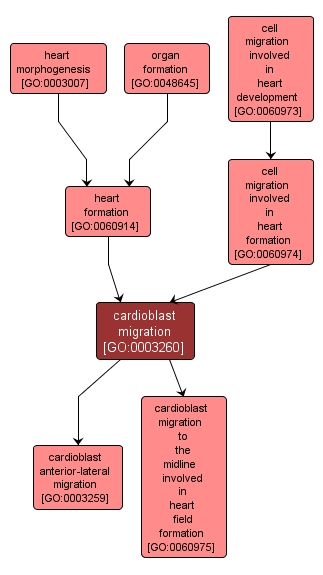| Desc: |
The orderly movement of a cardiac progenitor cell to form the heart field. Cardiac progenitor cells are non-terminally differentiated, mesoderm-derived cells that are committed to differentiate into cells of the heart. A cardioblast is a cardiac precursor cell. It is a cell that has been committed to a cardiac fate, but will undergo more cell division rather than terminally differentiating. |














